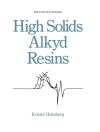Provides comprehensive coverage of organic corrosion inhibitors used in modern industrial platforms, including current developments in the design of promising classes of organic corrosion inhibitors
Corrosion is the cause of significant economic and safety-related problems that span across industries and applications, including production and processing operations, transportation and public utilities infrastructure, and oil and gas exploration. The use of organic corrosion inhibitors is a simple and cost-effective method for protecting processes, machinery, and materials while remaining environmentally acceptable. Organic Corrosion Inhibitors: Synthesis, Characterization, Mechanism, and Applications provides up-to-date coverage of all aspects of organic corrosion inhibitors, including their fundamental characteristics, synthesis, characterization, inhibition mechanism, and industrial applications.
Divided into five sections, the text first covers the basics of corrosion and prevention, experimental and computational testing, and the differences between organic and inorganic corrosion inhibitors. The next section describes various heterocyclic and non-heterocyclic corrosion inhibitors, followed by discussion of the corrosion inhibition characteristics of carbohydrates, amino acids, and other organic green corrosion inhibitors. The final two sections examine the corrosion inhibition properties of carbon nanotubes and graphene oxide, and review the application of natural and synthetic polymers as corrosion inhibitors. Featuring contributions by leading researchers and scientists from academia and industry, this authoritative volume:
* Discusses the latest developments and issues in the area of corrosion inhibition, including manufacturing challenges and new industrial applications
* Explores the development and implementation of environmentally-friendly alternatives to traditional toxic corrosion inhibitors
* Covers both established and emerging classes of corrosion inhibitors as well as future research directions
* Describes the anticorrosive mechanisms and effects of acyclic, cyclic, natural, and synthetic corrosion inhibitors
Offering an interdisciplinary approach to the subject, Organic Corrosion Inhibitors: Synthesis, Characterization, Mechanism, and Applications is essential reading for chemists, chemical engineers, researchers, industry professionals, and advanced students working in fields such as corrosion inhibitors, corrosion engineering, materials science, and applied chemistry.
Содержание
Section 1: Basics of corrosion and prevention
Chapter 1. An overview of Corrosion
Chapter 2. Methods of corrosion monitoring
Chapter 3. Computational methods of corrosion monitoring
Chapter 4. Organic and inorganic corrosion inhibitors: A comparison
Section 2: Heterocyclic and non-heterocyclic corrosion inhibitors
Chapter 5: Amines as corrosion inhibitors
Chapter 6: Imidazole and its derivatives as corrosion inhibitors
Chapter 7: Pyridine and its derivatives as corrosion inhibitors
Chapter 8: Quinoline and its derivatives as corrosion inhibitor
Chapter 9: Indole and its derivatives as corrosion inhibitors
Chapter 10: Organic compounds as corrosion inhibitors in oil and gas industry
Section 3. Organic green corrosion inhibitors
Chapter 11: Carbohydrates and their derivatives as corrosion inhibitors
Chapter 12: Amino acids (AAs) and their derivatives as corrosion inhibitors
Chapter 13: Chemical medicines as corrosion inhibitors
Chapter 14: Ionic liquids as corrosion inhibitors
Chapter 15: Oleochemicals as corrosion inhibitors
Section 4: Organic compounds based nanomaterials as corrosion inhibitors
Chapter 16: Carbon nanotubes as corrosion inhibitors
Chapter 17: Graphene and graphene oxides as corrosion inhibitors
Section 5: Organic polymers as corrosion inhibitors
Chapter 18: Natural polymers as corrosion inhibitors
Chapter 19: Synthetic polymers as corrosion inhibitors
Chapter 20 : Epoxy resins and their nanocomposites as anticorrosive materials
Об авторе
Chandrabhan Verma, Ph D, is Post-Doctoral Fellow, Interdisciplinary Research Center for Advanced Materials, King Fahd University of Petroleum and Minerals, Dhahran, 31261, Saudi Arabia. He is a member of American Chemical Society (ACS) and is the author of several research and review articles in peer-reviewed international journals.
Chaudhery Mustansar Hussain, Ph D, is Adjunct Professor, Academic Advisor, and Director of Chemistry and EVSC Laboratories, New Jersey Institute of Technology (NJIT), USA. Dr. Hussain is the author of numerous papers in peer-reviewed journals as well as of several scientific monographs and handbooks in his research areas.
Eno E. Ebenso, Ph D, is Full Professor, Institute for Nanotechnology and Water Sustainability, College of Science, Engineering and Technology, University of South Africa, Johannesburg, South Africa. Professor Ebenso is the author of more than 450 peer-reviewed journal articles in peer-reviewed journals and is the recipient of several national and international awards for his academic achievements.












